Rohrbach R.III/R.IIIa Rodra (1924-34)
 Flying Boat, six made.
Flying Boat, six made.
Development
About Adolf Rohrbach and his Company
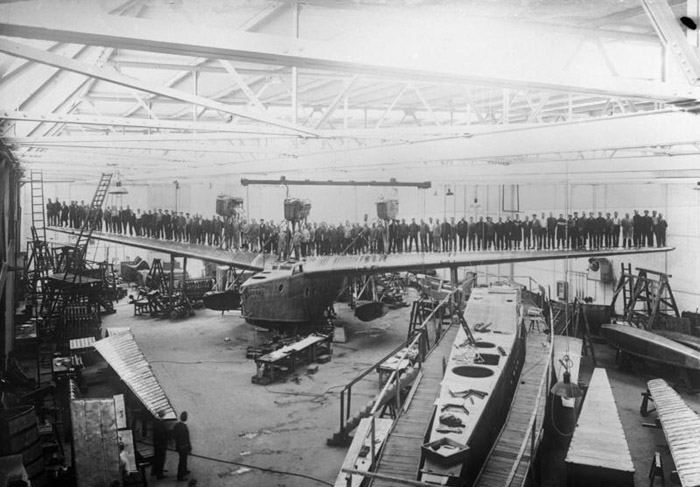
Demonstrating the robust duralumin structure with all its employees on a Ro X Romar in 1928.
Dr.Ing. Adolf Rohrbach (1899-1939) was an important German aviation pioneer who died in 1939. He was the great specialist in the use of duralumin from 1921, builing a series of large monoplane flying boats in order to try establish passenger travel across the Atlantic. He gained his initial experience with light-alloy structures with Zeppelin at the Staaken factory, and also the 1918 giant flying boat Count Von Zeppeling hoped to sell to the Kaiserliches Marine. Zeppelin was closed after the war, until the allies took interest in civilian airships and gelped the company surviving.
However Rorhbach preferred working on flying boats and by 1922 he founded the Rohrbach Metall-Flugzeugbau GmbH in Berlin. As powered aircraft construction was still banned in Germany by the Versailles Treaty, this became a design office, while a proper factory was created in Copenhagen. His first completed design was the all-metal Rohrbach Ro II, built in Denmark and so was the Ro III, object of this post. But for the next Ro IIIa Rodra for export, it was built in Berlin after the Versailles conditions were relaxed in 1926, but with completion and flight testing still done in Copenhagen.
Pedecessors Ro-I and II
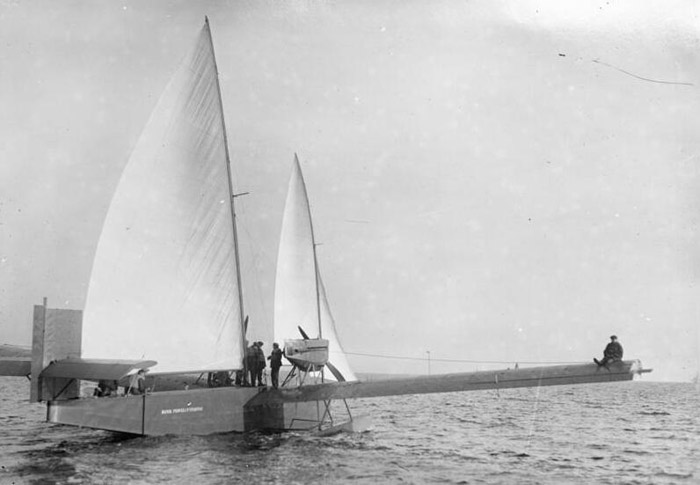
Ro-II demonstrating its emergency sailing rig, a feature unique to Rohrbach.
After designing Ro I, which was a twin-engined flying boat at his office in Berlin (Rohrbach Metall-Flugzeugbau), never built due to the Cersailles Treaty, he created a factory in Denmark, and for a first built, developed an improved model, the Rohrbach Ro II. This second flying boat, all-metal shoulder winged monoplane was powered by two tractor engines mounted in strut-supported nacelles above the wings.
The planforms and profiles were were simple, with rectangular section fuselage frames and vee planing bottoms, as well constant chord wings and a tailplane and fin with square cut tips. It also had distinctive protruding servo/trim/balance tabs at wing and fin tips. This was to be able to hire workers and train them quickly to built such an aicraft with greater ease.
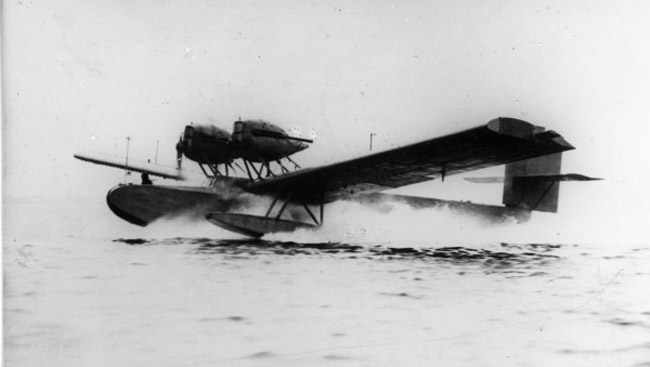
There was a two-seat open cockpit between the engines at wing leading edge. There was also an "bosun's post" in the nose, which could be converted as an open gunner position. The hull itself was divided into watertight compartments. It was quite unique as well for carrying z pair of masts and sails, to be rigged in case of engine failure, not rare at the time, as a guarantee to sail back to any safe harbour. That "Rohrbach's touch" was quite unique and remained true for later models to some extent.
As the prototype Ro II was producted, the Versailles Treaty still forbade construction of large aircraft in Germany so it was delivered by Rohrbach-Metall-Aeroplan Co. A/S' in Copenhagen. In 1926 this strict regulation was relaxed in 1926 as the German Aicraft Industry needed to at least be capable of providing civilian needs. So later operations moved to Berlin, but not before the Ro-III was also produced in Denmark. The unique demonstrator Ro-II first flew on 11 November 1923, piloted by Werner Landmann. It attempted to break a speed/load record on 24 October 1924. After many flights it was sold to Mitsubishi Shoji Kaisha Ltd. and re-designated Yokosho Experimental Type R 1, trialled to evaluate modern flying Boats by the Imperial Japanese Navy.
Design
General Structure
The design of the Ro-III started right after the construction of te Ro-II started in Denmark, in order to improve the recipe, witn later inputs from the first flight in November 1923. Initially, it was known as the Ro II series III, for its close similarity with a most obvious difference, a sharp bow to improve seaworthiness. It was advertised as a ten passenger airliner or a long range reconnaissance aircraft for export for various Navies.The Ro III was a bit larger than the Ro-II, with a fuselage 17.20 m or 56 ft 5 in long (Ro-II 16.5 m or 54 ft 2 in), a wingspan ported to 27.55 m (90 ft 5 in) (Ro-II 27 m or 88 ft 7 in) and an height of 6 m (19 ft 8 in) (Ro-II 5 m or 16 ft 5 in). Its wing area was the same at 73.40 m2 (790.1 sq ft).
The general appearance was the same, of a cantilever, shoulder mounted high wing, with a strictly rectangular plan, and thick aerofoil section. The aspect ratio was 11.46, which high for the time, 6° of dihedral. Wing construction used duralumin throughout. The nose and rear box spars were joined by ribs and the metal skin rested on a large box girder. The latter was attached to the fuselage sides at their tops. There were also balanced rectangular ailerons, which filled c35% of the trailing edges, out to the tips.
Layout
The hull was all-metal and rectangular in section with flat sides and top. The planing bottom was flat, unusual for seaplanes, but built with two steps. Water stability required long and stepless floats on either side, that were strut-mounted from the wings outside the engines, braced to the fuselage with a parallel pair of horizontal struts.The hull tapered in plan to the tail. The empennage was also rectangular, with a broad fin ending beyond the hull's tail and carrying a balanced rudder. The tailplane was mounted on the fin at 1/3 on the way up. It was braced from below, with a single strut on either side. It also carried narrow-chord elevators. The open cockpit ws mounted dangerously close to the propeller discs, a common feature of such tractor seaplanes. Since there was a military reconnaissance version, it had a crew of three, with an observer MG-gunner forward and a pilot and co-pilot. In a passenger configuration, there were eight seats inside the fuselage which received three portholes.
Powerplant and performances
The Ro III was powered by two 270 kW (360 hp) water-cooled V-12 Rolls-Royce Eagle IX engines like for the Ro-II. They were strut-mounted close together above the wing. Their propellers arcs projected ahead of the leading edge to avoid disturbances. Thanks to these, the RO-III reached a top speed of 165 km/h (102.5 mph, 89.1 kn) and a stall speed of 110 km/h (68 mph, 59 knots) for a service ceiling of 3,000 m (9.842 ft). If the engines failed, the Ro III carried two masts and three sails to create a schonner rigging, easy to brace and direct, and enabling sailing anywhere to a point.The prototype Ro-II series III, later simply renamed "Ro-III", first flew in early 1925 (date unknown). Trials were successful, but the prospect of exports and more lax regulation led to move the production back to Germany and improve on the model.
Ro-IIIa Rodra
In the first half of 1926, Rohrbach created for export the Ro IIIa Rodra, powered this time by two 340 kW (450 hp) Lorraine 12E Courlis W12 water-cooled engines. They had shorter and more streamlined cowlings to help aerodynamics, and the honeycomb radiators were relocated on the wing underside, for more efficience and les drag. The wing still mounted on top of the fuselage but its span was reduced by 1.45 m (4 ft 9 in). However the ailerons were no longer compensated.The Ro-IIIa Rodra was designed solely as long range reconnaissance bomber. There were side-by-side dual controls for the pilot and co-pilot and instead of just one, two gun positions, still one in the nose, but there was another on the dorsal position, close to the tail. Both had each twin machine guns, for four total and 2,000 rounds with tracers shared between them. The nose position was also used for observation, and the nose-gunner also acted as bombardier, in charge of the aiming and dropping the bombs, mounted underwing beyond the floats. The load was limited however 1,196 kg (2,637 lb), with up to ten 120 kgs bombs under racks.
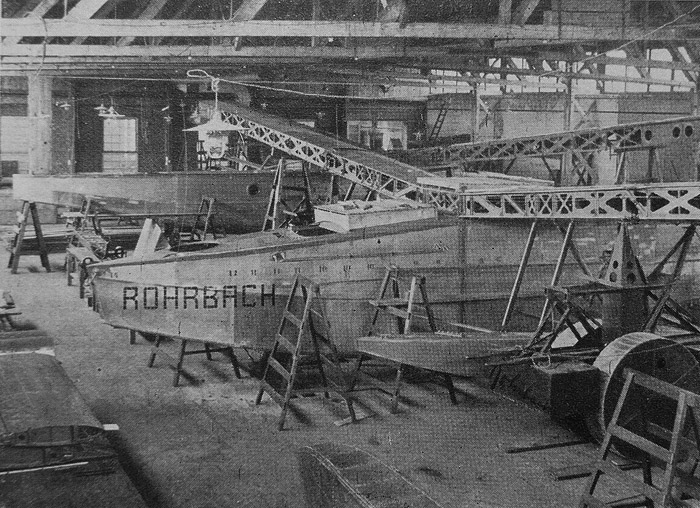
Variants
Ro III: 29 m (95 ft 2 in) span, 270 kW (360 hp) Rolls-Royce Eagle IX. 4 to Japan, re-engined.Ro IIIa Rodra: Lorraine engines, shorter spane, two sold to the Turkish Navy.
Specifications Ro IIIa Rodra | |
| Crew: | 3 |
| Lenght | 17.20 m (56 ft 5 in) |
| Wingspan | 27.55 m (90 ft 5 in) |
| Height | 6 m (19 ft 8 in) |
| Wing area | 73.40 m2 (790.1 sq ft) |
| Empty weight | 3,900 kg (8,598 lb) |
| Max TO Weight | 5,650 kg (12,456 lb) |
| Propulsion | 2× Lorraine 12E Courlis wc W12, 340 kW (450 hp) |
| Propeller | 2-bladed metal, fixed pitch. |
| Top speed | 195 km/h (121 mph, 105 kn) |
| Service ceiling | 3,000 m (9,800 ft) |
| Rate of climb | 17 min to 2,000 m (6,600 ft) |
| Range | c900 km or 3 hr |
| Touchdown speed | 100 km/h (62 mph; 54 kn) |
| Armament | 2x2 in nose and dorsal positions (2,000 rds), 1,196 kg (2,637 lb) bombs |
Fate
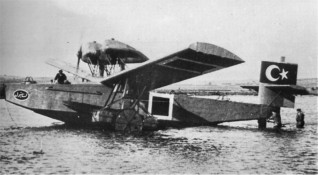 Four Ro IIIs were expported to Japan in 1925, purchased as "Rohrbach R-1" and given to the IJN for patrol. Two kept their original 270 kW (360 hp) Eagles engines before being replaced by 340 kW (450 hp) Hispano-Suiza or Lorraine 12E Courlis and named "R-2" and "R-3". One Ro III was later used by Japan Airline Co. under the J-BHAE registration. Mitsubishi bought a licence to build more, but it was not exploited.
Four Ro IIIs were expported to Japan in 1925, purchased as "Rohrbach R-1" and given to the IJN for patrol. Two kept their original 270 kW (360 hp) Eagles engines before being replaced by 340 kW (450 hp) Hispano-Suiza or Lorraine 12E Courlis and named "R-2" and "R-3". One Ro III was later used by Japan Airline Co. under the J-BHAE registration. Mitsubishi bought a licence to build more, but it was not exploited.
The remainder two were sold to the Turkish Navy based at Smyrna to patrol against any incursion of the Hellenic Navy. After four years operation, they sent to Germany for a long examination. The German aviation authorities found them in good consition and without safety issues. There is a claim also the same (or two more) were purchased and tested by the RAF at Martlesham Heath but it remain unsubstantiated.

The two Rodra were number 1201 (١٢٠١) and 1202 (١٢٠٢) as written in a nose cartouche. They were also named "İstanbul" and "İzmir" with the number in Roman numerals below on the nose as well. Both flying boats were financed through donations of the citizens of Istanbul and Izmir, hence their patronage, in 1924-1925. They came from Denmark via the Baltic in 1926 and served at the 1st and 3rd Dz.Ty Bl Seaplane Companies, and from 1928 transferred tothe 31st Dz.Ty.Bl. They were written off in 1934. They were given four 7.9 mm MG (model unknown) and carried 1,000t bombs. Their range remains unknown, but they could stay aloft in patrol for 5 hours.
Gallery

Author's illustration or the Ro-IIIa Rodra of the Turkish Navy, 1927.

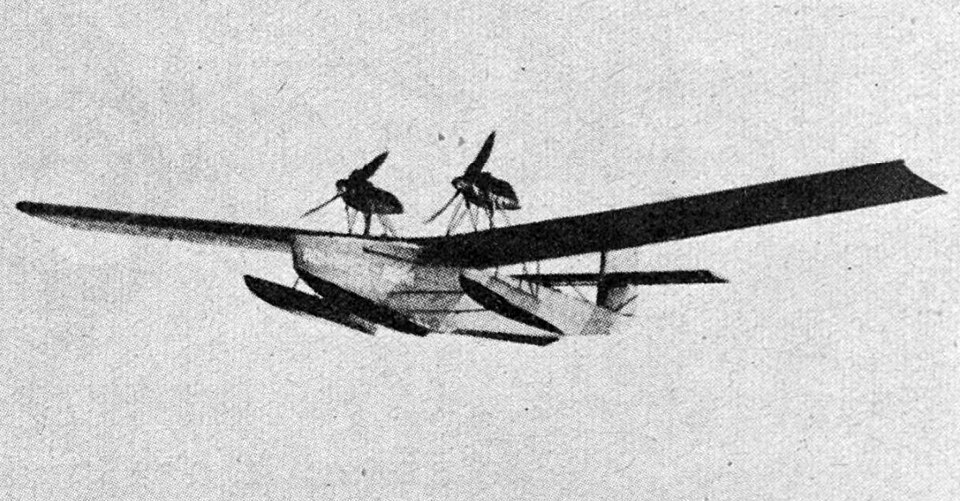

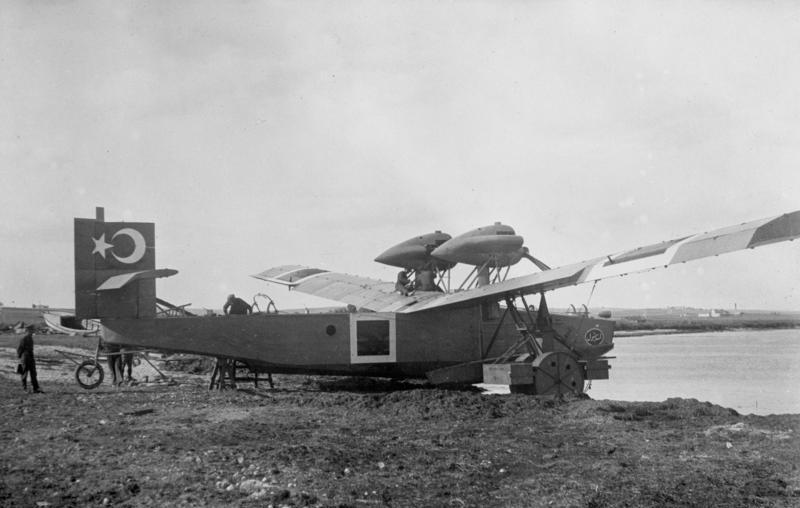

Sources
Gütschow, Fred (1978). Die deutschen Flugboote. Stuttgart: Motorbuch Verlag. pp. 249–52.Conradis, Heinz (1960). Design for Flight (The Kurt Tank Story). London: Mcdonald & Co. earlyflightera.com The Rohrbach Chronicles
digital.deutsches-museum.de
natureandtech.com
janes.migavia.com
airandspace.si.edu
tayyareci.com
de.wikipedia.org
commons.wikimedia.org
Serryer, J. (31 March 1927). "L'Hydravion Rohrbach "Rodra"". Les Ailes (302): 3–4
"Rohrbach Ro". Retrieved 4 November 2017.
letletlet-warplanes.com
earlyflightera.com
en.wikipedia.org
modellversium.de
secretprojects.co.uk
- Lohner E (1913)
- Macchi M3 (1916)
- Macchi M5 (1918)
- Ansaldo ISVA (1918)
- Sopwith Baby (1916)
- Short 184 (1916)
- Fairey Campania (1917)
- Sopwith Cuckoo (1917)
- Felixstowe F.2 (1917)
- Friedrichshafen FF 33 (1916)
- Albatros W4 (1916)
- Albatros W8 (1918)
- Hanriot HD.2
- Grigorovitch M5
- IJN Farman MF.7
- IJN Yokosho Type Mo
- Yokosho Rogou Kougata (1917)
- Yokosuka Igo-Ko (1920)
- Curtiss N9 (1916)
- Aeromarine 39
- Vought VE-7
- Douglas DT (1921)
- Boeing FB.5 (1923)
- Boeing F4B (1928)
- Vought O2U/O3U Corsair (1928)
- Blackburn Blackburn (1922)
- Supermarine Seagull (1922)
- Blackburn Ripon (1926)
- Fairey IIIF (1927)
- Fairey Seal (1930)
- LGL-32 C.1 (1927)
- Caspar U1 (1921)
- Dornier Do J Wal (1922)
- Rohrbach R-III (1924)
- Mitsubishi 1MF (1923)
- Mitsubishi B1M (1923)
- Yokosuka E1Y (1923)
- Nakajima A1N (1927)
- Nakajima E2N (1927)
- Mitsubishi B2M (1927)
- Nakajima A4N (1929)
- CANT 18
WW1
✠ K.u.K. Seefliegerkorps:
 Italian Naval Aviation
Italian Naval Aviation
 RNAS
RNAS
 Marineflieger
Marineflieger
 French Naval Aviation
French Naval Aviation
 Russian Naval Aviation
Russian Naval Aviation
 IJN Air Service
IJN Air Service
 USA
USA
Interwar
 Interwar US
Interwar US
 Interwar Britain
Interwar Britain
 Interwar France
Interwar France
 Interwar Germany
Interwar Germany
 Interwar Japan
Interwar Japan
 Interwar Italy
Interwar Italy
- Curtiss SOC seagull (1934)
- Grumman FF (1931)
- Curtiss F11C Goshawk (1932)
- Grumman F2F (1933)
- Grumman F3F (1935)
- Northrop BT-1 (1935)
- Grumman J2F Duck (1936)
- Consolidated PBY Catalina (1935)
- Brewster/NAF SBN-1 (1936)
- Curtiss SBC Helldiver (1936)
- Vought SB2U Vindicator (1936)
- Brewster F2A Buffalo (1937)
- Douglas TBD Devastator (1937)
- Vought Kingfisher (1938)
- Curtiss SO3C Seamew (1939)
- Douglas SBD Dauntless (1939)
- Grumman F4F Wildcat (1940)
- F4U Corsair (NE) (1940)
- Brewster SB2A Buccaneer (1941)
- Grumman TBF/TBM Avenger (1941)
- Consolidated TBY Sea Wolf (1941)
- Grumman F6F Hellcat (1942)
- Curtiss SB2C Helldiver (1942)
- Curtiss SC Seahawk (1944)
- Grumman F8F Bearcat (1944)
- Ryan FR-1 Fireball (1944)
- Douglas AD-1 Skyraider (1945)
Fleet Air Arm
- Fairey Swordfish (1934)
- Blackburn Shark (1934)
- Supermarine Walrus (1936)
- Fairey Seafox (1936)
- Blackburn Skua (1937)
- Short Sunderland (1937)
- Blackburn Roc (1938)
- Fairey Albacore (1940)
- Fairey Fulmar (1940)
- Grumman Martlet (1941)
- Hawker sea Hurricane (1941)
- Brewster Bermuda (1942)
- Fairey Barracuda (1943)
- Fairey Firefly (1943)
- Grumman Tarpon (1943)
- Grumman Gannet (1943)
- Supermarine seafire (1943)
- Blackburn Firebrand (1944)
- Hawker Sea Fury (1944)
IJN aviation
- Aichi D1A "Susie" (1934)
- Mitsubishi A5M "Claude" (1935)
- Nakajima A4N (1935)
- Yokosuka B4Y "Jean" (1935)
- Mitsubishi G3M "Nell" (1935)
- Nakajima E8N "Dave" (1935)
- Kawanishi E7K "Alf" (1935)
- Nakajima B5N "Kate" (1937)
- Kawanishi H6K "Mavis" (1938)
- Aichi D3A "Val" (1940)
- Mitsubishi A6M "zeke" (1940)
- Nakajima E14Y "Glen" (1941)
- Nakajima B6N "Jill" (1941)
- Mitsubishi F1M "pete" (1941)
- Aichi E13A Reisu "Jake" (1941)
- Kawanishi E15K Shiun "Norm" (1941)
- Nakajima C6N Saiun "Myrt" (1942)
- Yokosuka D4Y "Judy" (1942)
- Kyushu Q1W Tokai "Lorna" (1944)
Luftwaffe
- Arado 196 (1937)
- Me109 T (1938)
- Blohm & Voss 138 Seedrache (1940)
Italian Aviation
- Savoia-Marchetti S.55
- IMAM Ro.43/44
- CANT Z.501 Gabbiano
- CANT Z.506 Airone
- CANT Z.508
- CANT Z.511
French Aeronavale
- GL.300 (1926-39)
- Levasseur PL.5 (1927)
- Potez 452 (1935)
- Loire 210 (1936)
- Loire 130 (1937)
- LN 401 (1938)
Soviet Naval Aviation
- Shavrov SH-2 (1928)
- Tupolev TB-1P (1931)
- Beriev MBR-2 (1930)
- Tupolev MR-6 (1933)
- Tupolev MTB-1 (1934)
- Beriev Be-2 (1936)
- Polikarpov I16 naval (1936)
- Tupolev MTB-2 (1937)
- Ilyushine DB-3T/TP (1937)
- Beriev Be-4 (1940)
-
Skoda Š-328V
R-XIII Idro
Fokker C.XI W (1934)
WW2
- De Havilland Sea Vixen
- Hawker Sea Hawk
- Supermarine Scimitar
- Blackburn Buccaneer
- Hawker Sea Harrier
- Douglas A4 Skyhawk
- Grumman F9F Panther
- Vought F8 Crusader
- McDonnell-Douglas F-4 Phantom-II
- North Am. A5 Vigilante
- TU-142
- Yak 38 forger
☢ Cold War
✧ NATO
 Fleet Air Arm
Fleet Air Arm
 US Navy
US Navy
☭ Warsaw Pact
Merch

Seafire Mark 45; HMS Pretoria Castle
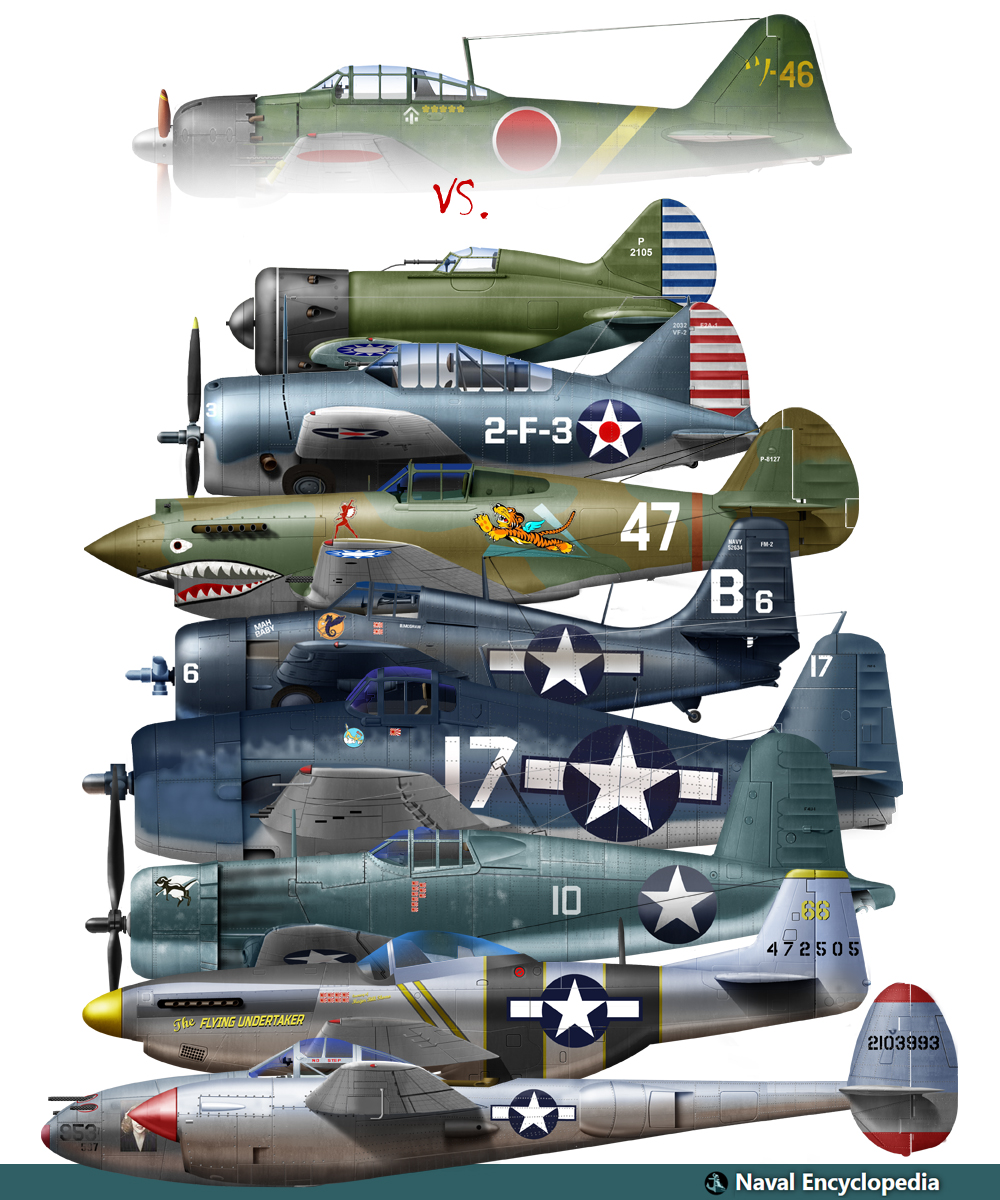
Zeros vs its aversaries
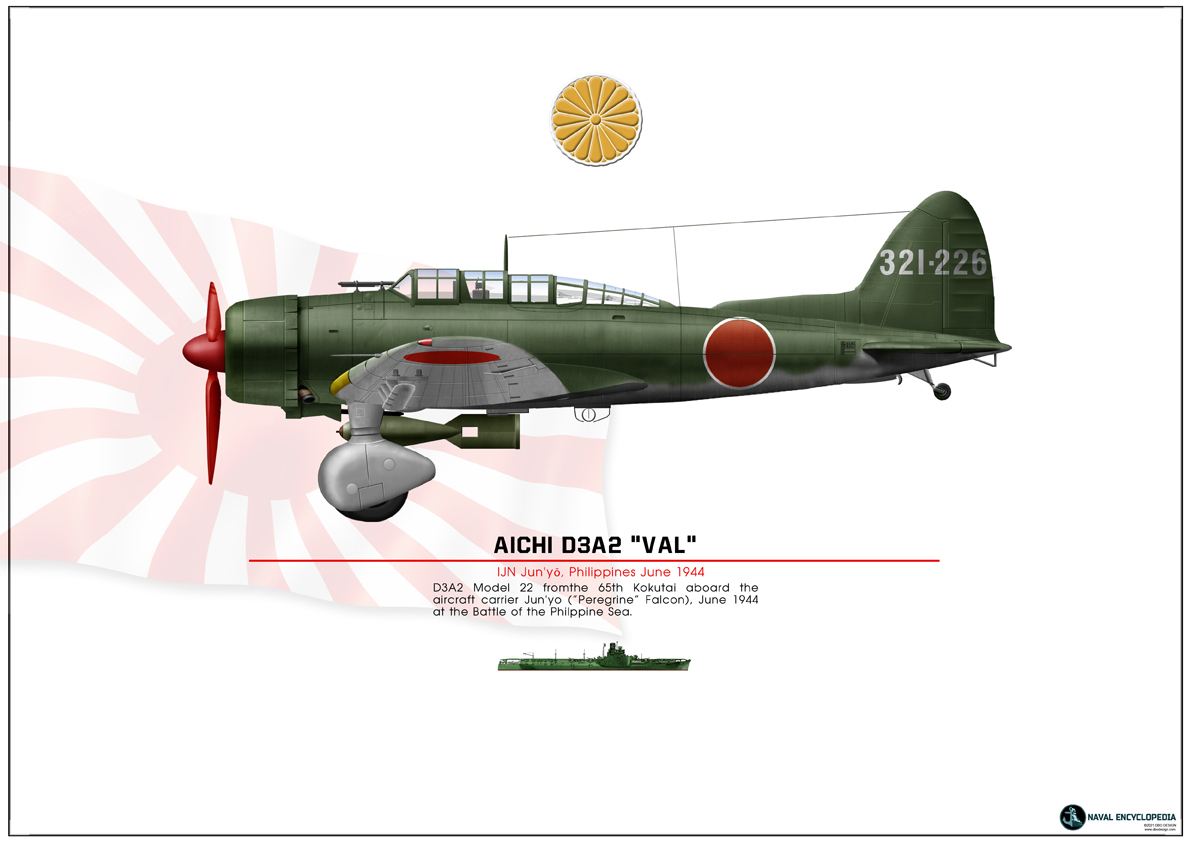
Aichi D3A “Val” Junyo
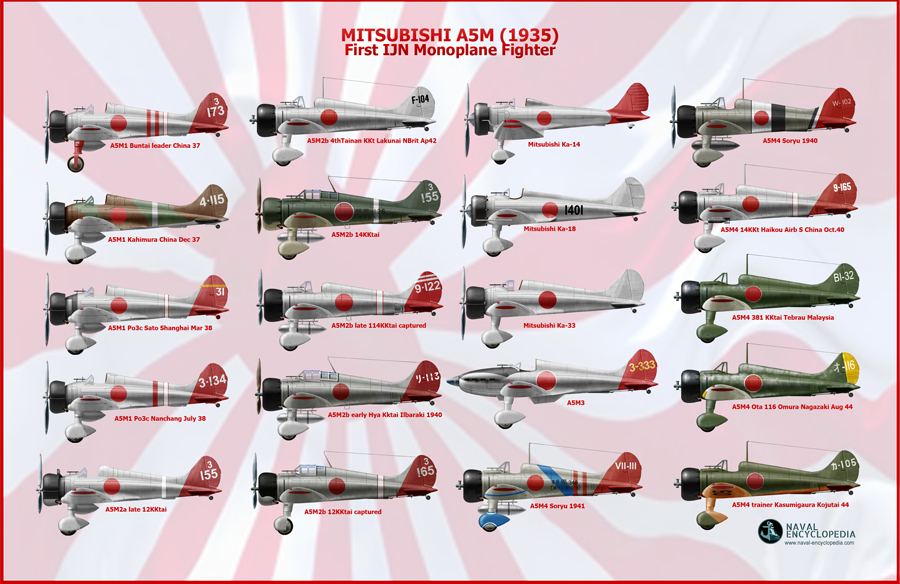
Mitsubishi A5M poster
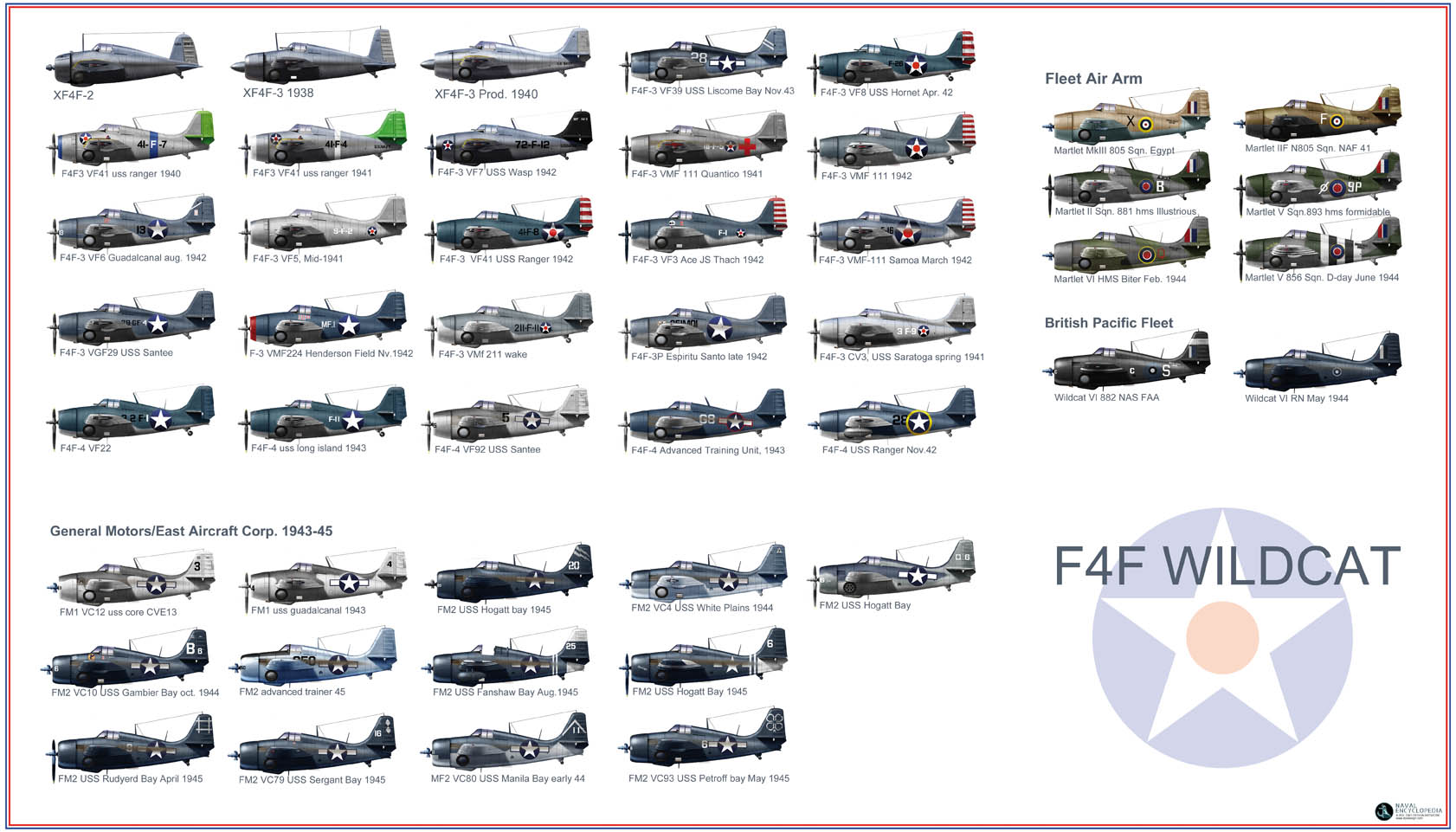
F4F wildcat
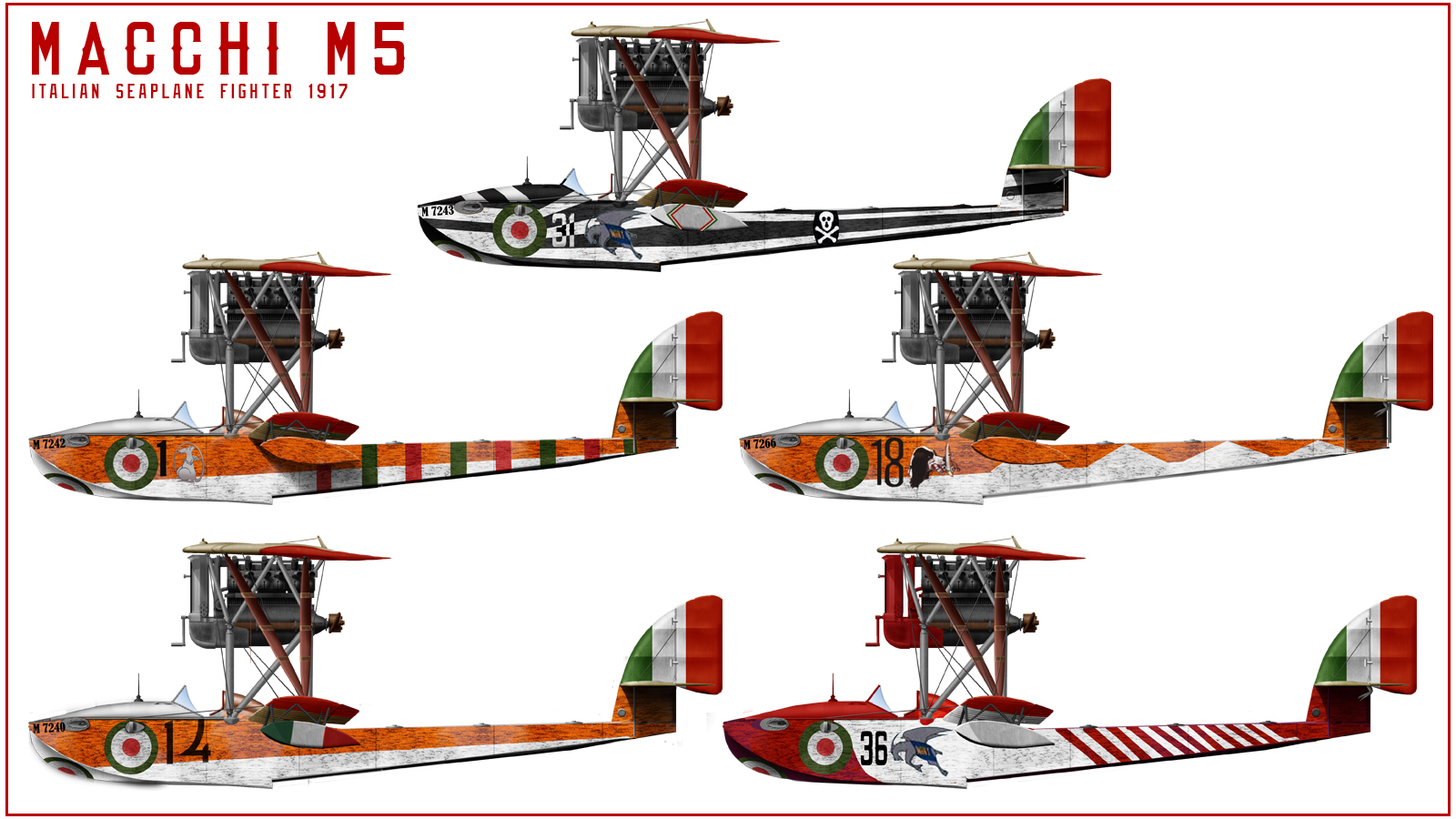
Macchi M5
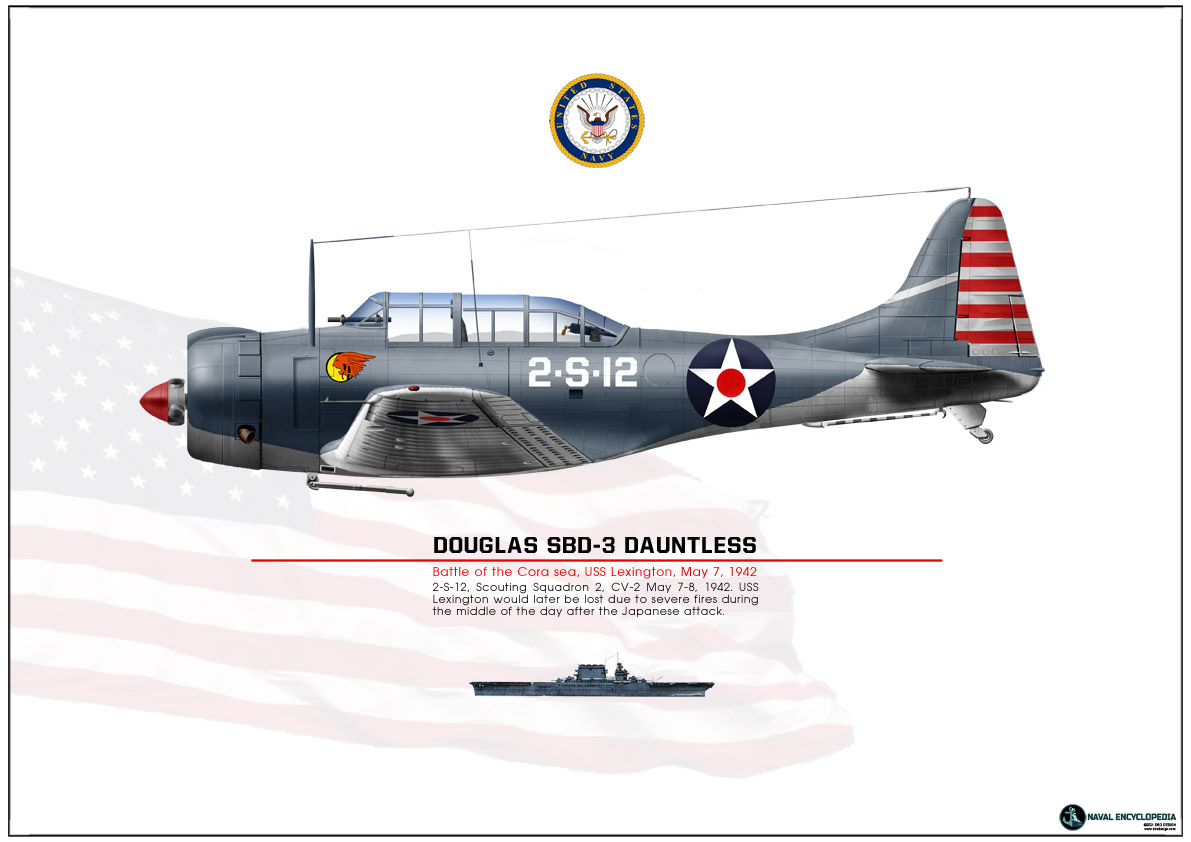
SBD Dauntless Coral Sea
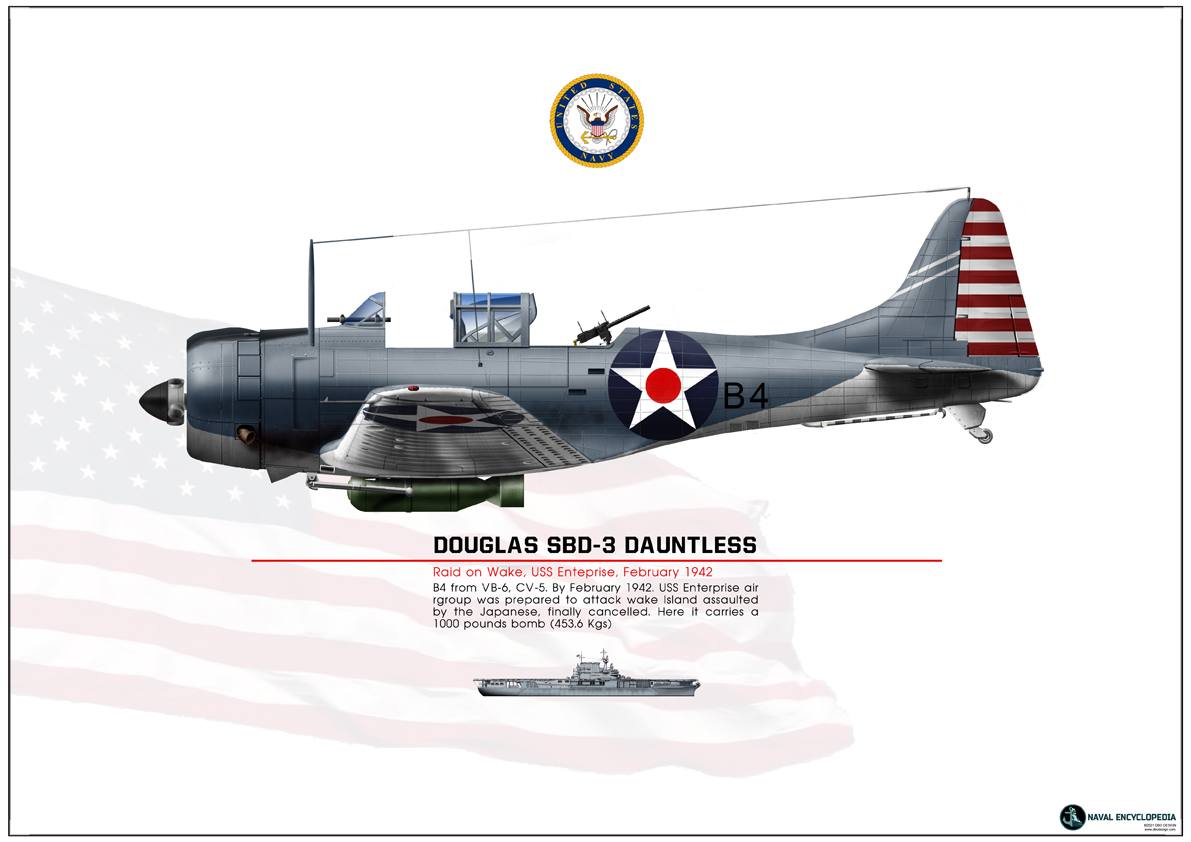
SBD Dauntless USS Enterprise
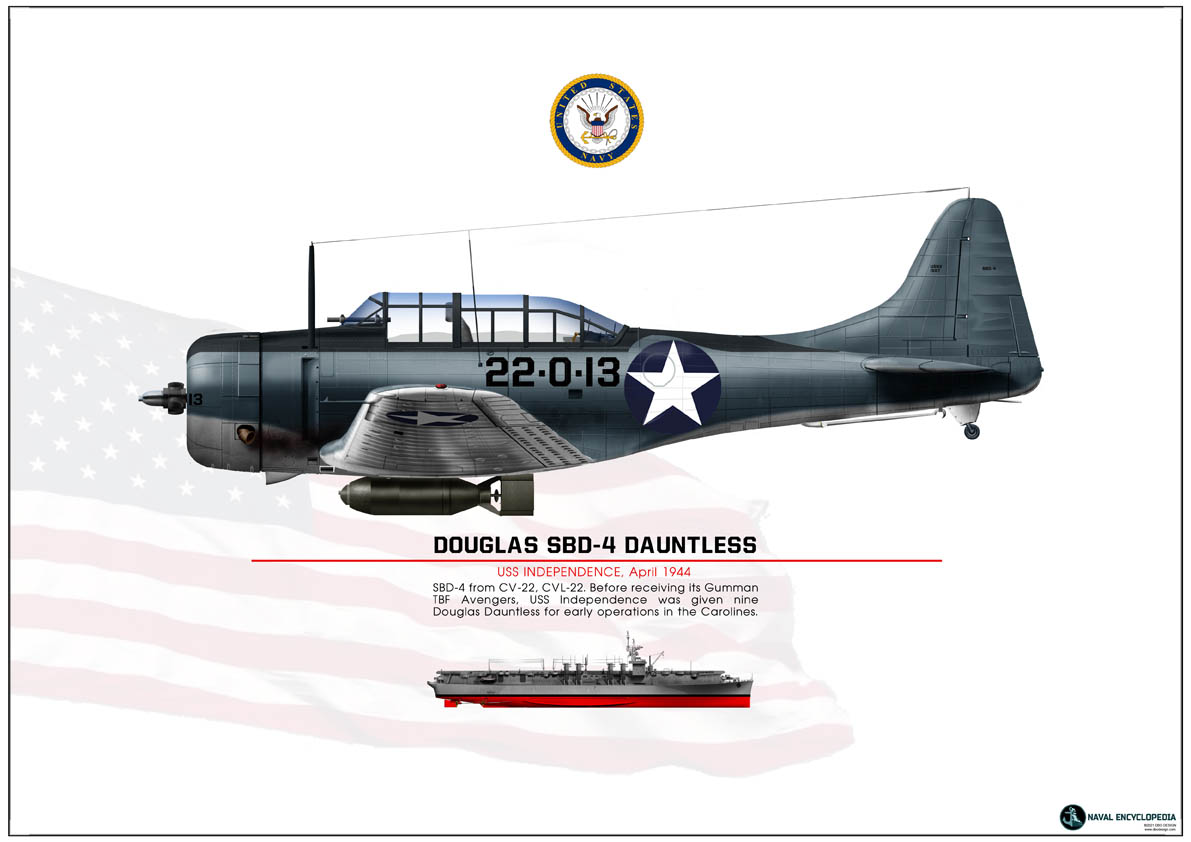
SBD-4 CV22